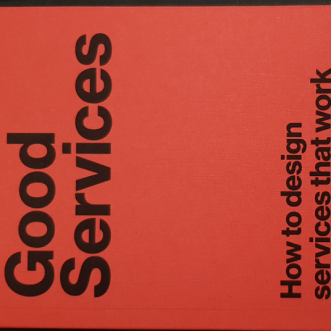November 10, 2020
When you build a business that works through others you have to find a way of enabling them to work autonomously and responsibly.
The traditional way of doing that was to build a hierarchy of management above those doing the work, to supervise, check and adjust how things get done. The problem with that approach is that it’s unresponsive, expensive and actually makes it harder for people to work autonomously and responsibly. And if you are a small business owner trying to do all of that yourself, it can nearly kill you and the business.
The alternative is to help people to manage themselves. For that, they need a framework that supports them, but doesn’t stifle their ability to respond creatively and humanely to emergent scenarios. There are lots of familiar models and analogies for this kind of framework – a map, a blueprint, a screenplay, for example. My preferred analogy is a musical score – what I call your Customer Experience Score – that describes what has to happen and when to deliver the experience you want your clients to have when they deal with you – but leaves the how to the talented musicians you employ.
But how do you create that score?
In this mini-series, I’m exploring how you can use some of the principles of Service Design to help you create a Customer Experience Score that works well, using the principles outlined in this brilliant book by Lou Downe “Good Services” as my starting point. Let me stress, this is not a re-hash of the book, but an exploration of how it fits with my ideas for turning a business into a system for makeing and keeping promises. The book is well worth buying for yourself!
The basic idea is simple. A service helps a user to do something. You want your team to share and deliver your promise on your behalf. So treat them as your users and build them services that help them to do that.
The first principle is that ‘a service should be easy to find’ – even when you don’t know what it is.
Imagine you’re a newbie to your business. How do you find out what you’re supposed to do in your job? Where do you look? What do you look for? As a newbie, on probation, eager to impress, you want to be productive from day one. All too often that means asking someone who is already busy.
So the first thing that might help make services easy to find is to put them all in one place. You could call it an operations manual, but nowadays it’s more likely to be online, and searchable in more varied ways than a physical folder or file. What’s key is that:
- everyone knows where to look for it
- there is only one place to look for it
- there is only one version of it (apart from backups)
- it is kept up to date
- people can find what they need in it
How can you help your team find the service they need?
The name is a good place to start. Ask yourself: What do clients usually call this service? What do we normally call it? What do experts call it? Are those names the same? If not, what are your options?
A service should primarily be known by one name. Preferably one taken from the client’s perspective. This helps to remind everyone why this service exists – to help the client get the outcome they want – especially if it’s really part of a larger service for the client. You might call it ‘VAT reporting’, but the real service to the client might be ‘Meet Statutory Obligations’. You might call it ‘Management Accounting’, but the real service to the client is ‘Control My Business’.
This highlights another important aspect of naming. A service is an activity that helps someone do something. So it’s a good idea to name the activity to reflect what gets done when it works. This name is usually made up of two parts – a verb that describes what happens, followed by a noun that describes the thing it happens to e.g. ‘Draft VAT Return’.
This works at all levels of granularity, from the lowest level – ‘Draft VAT Return’, ‘Approve VAT Return’ or ‘File VAT Return’, up to ‘Report VAT’, ‘Meet Statutory Obligations’ and finally ‘Keep Promise’. The name should tell you exactly where you get to after you’ve completed the activity successfully. You’re there or you’re not, and if you’re not, you haven’t actually completed the activity.
By naming a service or activity in this way, you’ve also met the second principle, which is that ‘a service should clearly explain its purpose’.
Once you’ve arrived at this kind of name, you can make sure it’s findable by any of the other names you identified at the beginning.
With a clearly explained purpose and a customer-focused name, findable by familiar alternatives, you’ll help you newbies get up to productive speed much faster – by themselves. Which should make both of you much happier.









